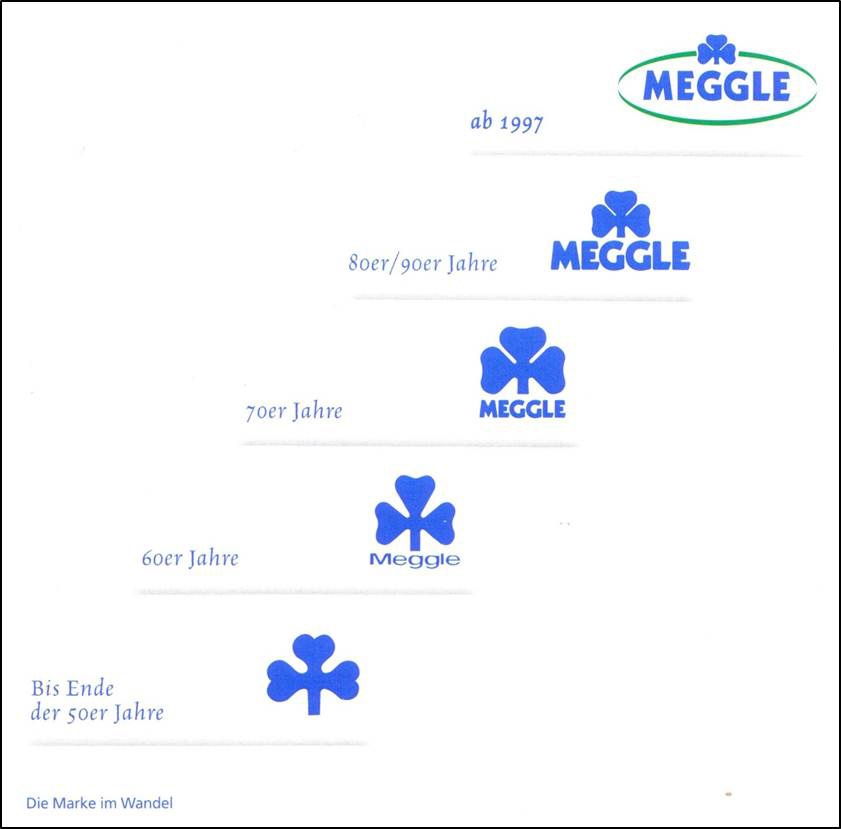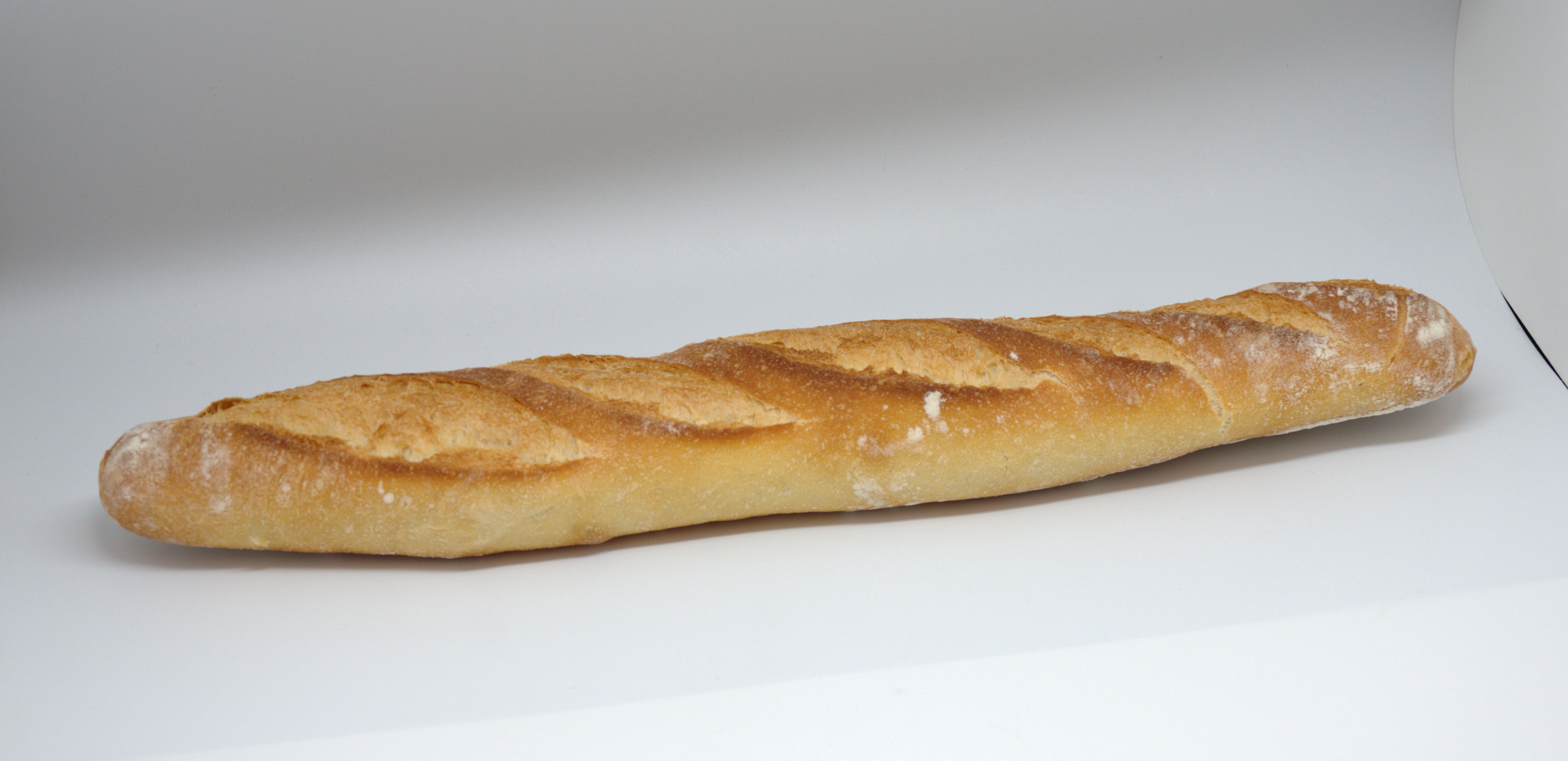|
Meggle AG
Meggle is a milk and whey processing company based in Wasserburg am Inn, Germany. History In 1882 Josef Anton Meggle founded a dairy in Wasserburg am Inn. In order to expand, Josef's brother Jakob opened a sales office in Dresden in 1886 – but he speculated and the company went bankrupt. In March 1887, Josef Meggle started all over again and founded the company again. In the following decades the company continued to grow and in the 1930s became the largest dairy in Munich. In 1932, semi-automatic production began with machines forming 250 g and 500 g butter pieces. The breakthrough for Meggle came with the 37th International Eucharistic Congress in Munich in the summer of 1960. Meggle was chosen to supply the 500,000 international participants with butter during the week-long event. Meggle developed the portion butter – and created a new product category. In 1998, the company was restructured and became a stock corporation. In 2012 the companies revenue exceeded ... [...More Info...] [...Related Items...] OR: [Wikipedia] [Google] [Baidu] |
Dairy
A dairy is a business enterprise established for the harvesting or processing (or both) of animal milk – mostly from cows or buffaloes, but also from goats, sheep, horses, or camels – for human consumption. A dairy is typically located on a dedicated dairy farm and milk or in a section of a multi-purpose farm (mixed farm) that is concerned with the harvesting of milk. As an attributive, the word ''dairy'' refers to milk-based products, derivatives and processes, and the animals and workers involved in their production: for example dairy cattle, dairy goat. A dairy farm produces milk and a dairy factory processes it into a variety of dairy products. These establishments constitute the global dairy industry, part of the food industry. Terminology Terminology differs between countries. In the United States, for example, an entire dairy farm is commonly called a "dairy". The building or farm area where milk is harvested from the cow is often called a "milking parlor" or "parl ... [...More Info...] [...Related Items...] OR: [Wikipedia] [Google] [Baidu] |
Cheese
Cheese is a dairy product produced in wide ranges of flavors, textures, and forms by coagulation of the milk protein casein. It comprises proteins and fat from milk, usually the milk of cows, buffalo, goats, or sheep. During production, milk is usually acidified and the enzymes of either rennet or bacterial enzymes with similar activity are added to cause the casein to coagulate. The solid curds are then separated from the liquid whey and pressed into finished cheese. Some cheeses have aromatic molds on the rind, the outer layer, or throughout. Over a thousand types of cheese exist and are produced in various countries. Their styles, textures and flavors depend on the origin of the milk (including the animal's diet), whether they have been pasteurized, the butterfat content, the bacteria and mold, the processing, and how long they have been aged. Herbs, spices, or wood smoke may be used as flavoring agents. The yellow to red color of many cheeses is produced by adding a ... [...More Info...] [...Related Items...] OR: [Wikipedia] [Google] [Baidu] |
Dairy Products Companies Of Germany
A dairy is a business enterprise established for the harvesting or processing (or both) of animal milk – mostly from cows or buffaloes, but also from goats, sheep, horses, or camels – for human consumption. A dairy is typically located on a dedicated dairy farm and milk or in a section of a multi-purpose farm (mixed farm) that is concerned with the harvesting of milk. As an attributive, the word ''dairy'' refers to milk-based products, derivatives and processes, and the animals and workers involved in their production: for example dairy cattle, dairy goat. A dairy farm produces milk and a dairy factory processes it into a variety of dairy products. These establishments constitute the global dairy industry, part of the food industry. Terminology Terminology differs between countries. In the United States, for example, an entire dairy farm is commonly called a "dairy". The building or farm area where milk is harvested from the cow is often called a "milking parlor" or "par ... [...More Info...] [...Related Items...] OR: [Wikipedia] [Google] [Baidu] |
Food Product Brands
Food is any substance consumed by an organism for nutritional support. Food is usually of plant, animal, or fungal origin, and contains essential nutrients, such as carbohydrates, fats, proteins, vitamins, or minerals. The substance is ingested by an organism and assimilated by the organism's cells to provide energy, maintain life, or stimulate growth. Different species of animals have different feeding behaviours that satisfy the needs of their unique metabolisms, often evolved to fill a specific ecological niche within specific geographical contexts. Omnivorous humans are highly adaptable and have adapted to obtain food in many different ecosystems. The majority of the food energy required is supplied by the industrial food industry, which produces food with intensive agriculture and distributes it through complex food processing and food distribution systems. This system of conventional agriculture relies heavily on fossil fuels, which means that the food and agric ... [...More Info...] [...Related Items...] OR: [Wikipedia] [Google] [Baidu] |
Food And Drink Companies Established In 1887
Food is any substance consumed by an organism for nutritional support. Food is usually of plant, animal, or fungal origin, and contains essential nutrients, such as carbohydrates, fats, proteins, vitamins, or minerals. The substance is ingested by an organism and assimilated by the organism's cells to provide energy, maintain life, or stimulate growth. Different species of animals have different feeding behaviours that satisfy the needs of their unique metabolisms, often evolved to fill a specific ecological niche within specific geographical contexts. Omnivorous humans are highly adaptable and have adapted to obtain food in many different ecosystems. The majority of the food energy required is supplied by the industrial food industry, which produces food with intensive agriculture and distributes it through complex food processing and food distribution systems. This system of conventional agriculture relies heavily on fossil fuels, which means that the food and agric ... [...More Info...] [...Related Items...] OR: [Wikipedia] [Google] [Baidu] |
Clover
Clover or trefoil are common names for plants of the genus ''Trifolium'' (from Latin ''tres'' 'three' + ''folium'' 'leaf'), consisting of about 300 species of flowering plants in the legume or pea family Fabaceae originating in Europe. The genus has a cosmopolitan distribution with highest diversity in the temperate Northern Hemisphere, but many species also occur in South America and Africa, including at high altitudes on mountains in the tropics. They are small annual, biennial, or short-lived perennial herbaceous plants, typically growing up to 30 cm tall. The leaves are trifoliate (rarely quatrefoiled; see four-leaf clover), monofoil, bifoil, cinquefoil, hexafoil, septfoil, etcetera, with stipules adnate to the leaf-stalk, and heads or dense spikes of small red, purple, white, or yellow flowers; the small, few-seeded pods are enclosed in the calyx. Other closely related genera often called clovers include ''Melilotus'' (sweet clover) and '' Medicago'' ( alfalfa or Calva ... [...More Info...] [...Related Items...] OR: [Wikipedia] [Google] [Baidu] |
Gourmet
Gourmet (, ) is a cultural idea associated with the culinary arts of fine food and drink, or haute cuisine, which is characterized by refined, even elaborate preparations and presentations of aesthetically balanced meals of several contrasting, often quite rich courses. Historically the ingredients used in the meal tended to be rare for the region, which could also be impacted by the local state and religious customs. The term and the related characteristics are typically used to describe people with refined tastes and enthusiasm. Gourmet food is frequently provided in more expensive, smaller servings. When it comes to Gourmet, there are also frequently cross-cultural interactions that introduce new ingredients, materials, and traditions. Origin of term The word ''gourmet'' is from the French term for a wine broker or ''taste-vin'' employed by a wine dealer. ''Friand'' was formerly the reputable name for a connoisseur of delicious things that were not eaten primarily for nourishm ... [...More Info...] [...Related Items...] OR: [Wikipedia] [Google] [Baidu] |
Portmanteau
A portmanteau word, or portmanteau (, ) is a blend of wordsGarner's Modern American Usage , p. 644. in which parts of multiple words are combined into a new word, as in ''smog'', coined by blending ''smoke'' and ''fog'', or ''motel'', from ''motor'' and ''hotel''. In , a portmanteau is a single morph that is analyzed as representing two (or more) underlying s. When portmanteaus shorten es ... [...More Info...] [...Related Items...] OR: [Wikipedia] [Google] [Baidu] |
Pharmaceutical Industry
The pharmaceutical industry discovers, develops, produces, and markets drugs or pharmaceutical drugs for use as medications to be administered to patients (or self-administered), with the aim to cure them, vaccinate them, or alleviate symptoms. Pharmaceutical companies may deal in generic or brand medications and medical devices. They are subject to a variety of laws and regulations that govern the patenting, testing, safety, efficacy using drug testing and marketing of drugs. The global pharmaceuticals market produced treatments worth $1,228.45 billion in 2020 and showed a compound annual growth rate (CAGR) of 1.8%. History Mid-1800s – 1945: From botanicals to the first synthetic drugs The modern era of pharmaceutical industry began with local apothecaries that expanded from their traditional role of distributing botanical drugs such as morphine and quinine to wholesale manufacture in the mid-1800s, and from discoveries resulting from applied research. Intentional drug ... [...More Info...] [...Related Items...] OR: [Wikipedia] [Google] [Baidu] |
Lactose
Lactose is a disaccharide sugar synthesized by galactose and glucose subunits and has the molecular formula C12H22O11. Lactose makes up around 2–8% of milk (by mass). The name comes from ' (gen. '), the Latin word for milk, plus the suffix '' -ose'' used to name sugars. The compound is a white, water-soluble, non-hygroscopic solid with a mildly sweet taste. It is used in the food industry. Structure and reactions Lactose is a disaccharide derived from the condensation of galactose and glucose, which form a β-1→4 glycosidic linkage. Its systematic name is β-D-galactopyranosyl-(1→4)-D-glucose. The glucose can be in either the α-pyranose form or the β-pyranose form, whereas the galactose can only have the β-pyranose form: hence α-lactose and β-lactose refer to the anomeric form of the glucopyranose ring alone. Detection reactions for lactose are the Woehlk- and Fearon's test. Both can be easily used in school experiments to visualise the different lactose content o ... [...More Info...] [...Related Items...] OR: [Wikipedia] [Google] [Baidu] |
Baguette
A baguette (; ) is a long, thin type of bread of French origin that is commonly made from basic lean dough (the dough, though not the shape, is defined by French law). It is distinguishable by its length and crisp crust. A baguette has a diameter of about and a usual length of about , although a baguette can be up to long. In November 2018, documentation surrounding the "craftsmanship and culture" of making this bread was added to the French Ministry of Culture's National Inventory of Intangible Cultural Heritage. In 2022, the artisanal know-how and culture of baguette bread was inscribed to the UNESCO Intangible Cultural Heritage Lists. History Much of the history of the baguette is speculation; however, some facts can be established. Long, stick-like breads in France became more popular during the 18th century, French bakers started using " ''gruau''," a highly refined Hungarian high-milled flour in the early 19th century, Viennese steam oven baking was introduced to ... [...More Info...] [...Related Items...] OR: [Wikipedia] [Google] [Baidu] |


.jpg)





_(6982162417).jpg)

